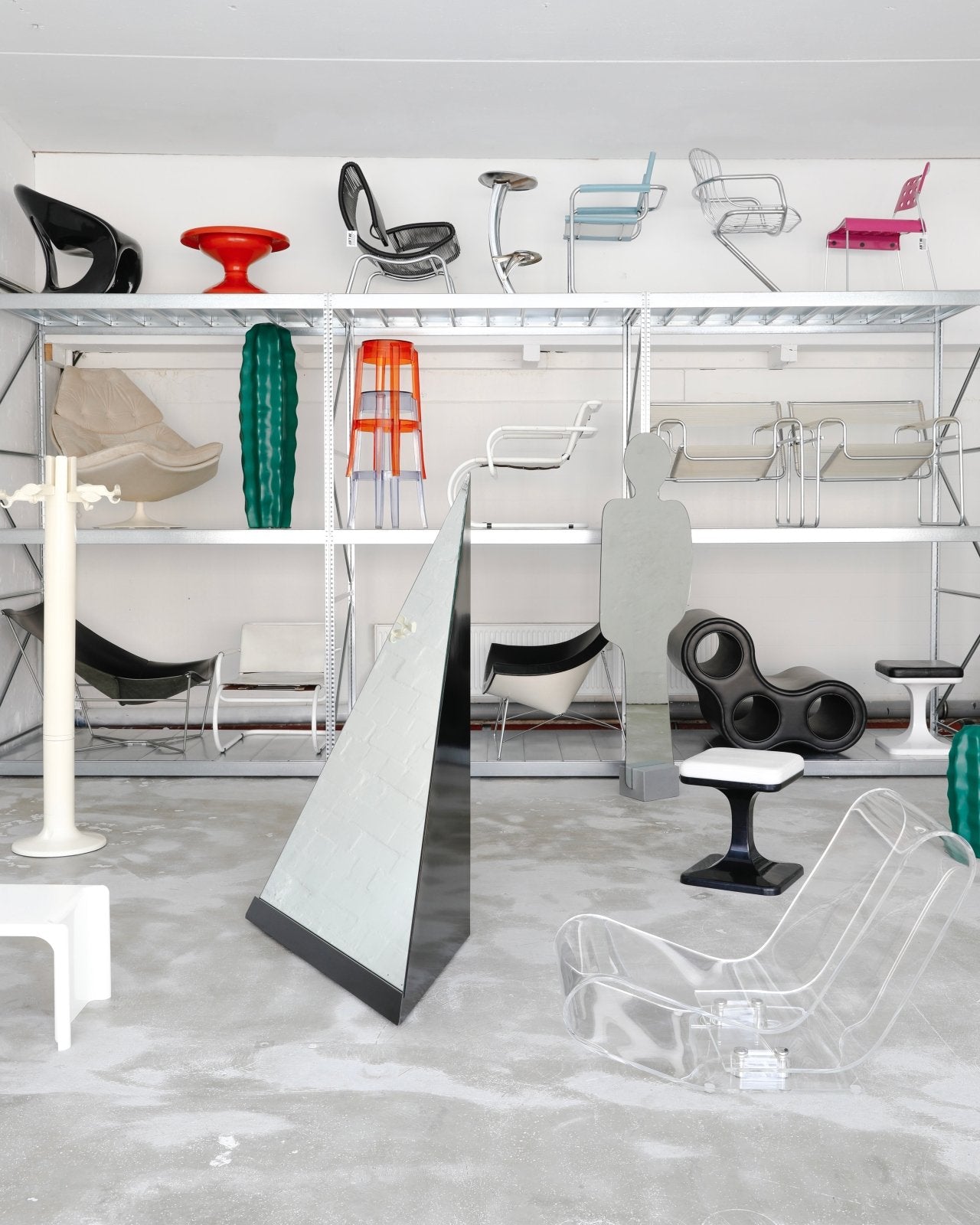
Annotations cc: Linda Käckermann
by Anoe Melliou
·
Linda Käckermann, founder of Ain’t No Trash, curates not just objects but the interactions they evoke. Guided by instinct and an aesthetic sensibility, her selections are informed by the relationship between form and fantasy. In this conversation, we reflect on furniture curation as a collective narrative, where objects shape and are shaped by the spaces they inhabit. We explore the nuances between intuition and intention, the nature of taste, and the certainty that, in the right hands, even the most unassuming object can hold the weight of a world.
Anoe: In a store, there is always movement. Pieces come and go — like a construction site, yet part of an ongoing process. Objects shift, disappear, reappear, creating a possible reality of a world elsewhere.
Linda: I completed my vocational diploma in construction engineering and then studied media management and fashion journalism but couldn’t align with those careers either. Before Ain’t No Trash, I went through a difficult period of self-reflection. I needed to reset. When I discovered my passion for collecting objects, it all came together. It’s deeply personal and it developed naturally. I didn’t overthink it. Trusting my instincts led to an authentic collection.
A: Collecting and curating demands a high level of coordination and even physical engagement. There’s a distinct visual language at Ain’t No Trash that defines how objects are presented. What foundational skills have been instrumental in this process?
L: At its core, it’s about curation — everything else naturally follows in the process of building a business. The essence lies in how we perceive objects, not merely as items but as integral elements of spaces and expressions of personality. Spaces evolve, personalities shift, and our perspectives adapt to external influences. I've observed a growing appreciation for individuality and storytelling in design, and that remains my central focus.


A: Have you had to make compromises to keep the business viable?
L: Surprisingly, no — maybe on a subconscious level. Compromises happen every day, but it all comes down to priorities.
A: I had a feeling you’d say that. The line between challenge and sacrifice is a matter of perspective. When it comes to your curatorial approach, what matters most?
L: I need to feel the object, not just see it. It’s about an emotional response, something deep and difficult to explain. It’s not about function, value, brand, or design, but rather how the object speaks.
A: Beyond curation, you manage both an online store and a physical space for shoots and productions. How do you navigate the balance between online and offline experiences?
L: Retail is evolving. It’s no longer just about selling products. It’s about creating meaningful experiences and connections. Online and offline spaces should complement each other. The digital world provides accessibility, but in-person interactions remain essential to the future of retail.

A: And you need to be responsive, right? Having the dynamic ability to read the moment and adjust with intention. At the center of it all is trust.
L: Trust is a big word for me. Over time, Ain’t No Trash grew beyond just a collection. It became a brand, which made me reflect on what that truly means. Storytelling is essential in this process. Our objects don’t just exist; they interact with us and our spaces. Hearing that my curation is recognizable validates my process because I don’t base the curation on trends, but rather trust my own sense of aesthetics.
A: Trends can be distracting. Taste is deeply personal, it’s formed by childhood memories, history, or romance.
L: Exactly. Taste is intimate. It’s shaped by surroundings — people, nature, objects, spaces. It’s subjective.


A: When expressed authentically, it gains context and depth — it’s a statement. It tells a personal narrative, as the arrangement of objects does.
L: Some people don’t instinctively connect with objects, though. That’s where inspiration and visualization come in and help others see possibilities in their spaces.
A: As creatives, we naturally visualize possibilities. Part of running a brand is translating a personal vision into something tangible — something to share. It’s communication. What has been a highlight for you in this process?
L: It is particularly rewarding when it happens. We had a playful lounge chair in our studio — with a chrome base, and spaghetti-stripe upholstery. A friend visited with their son, who was instantly drawn to it. He played with it, sat on it in many different ways. They weren’t even looking for a chair, but he wanted it so badly that it’s now so seamlessly part of his room. That’s what I seek to create, not just engagement with designs or materials, but a true connection between people and objects.
A: That’s sentimental and ties everything together. Objects carry narratives, and the way people interact with them makes those stories personal.
L: Every object becomes part of a personal narrative.
__
Text: Anoe Melliou
Images: Courtesy of Ain’t No Trash – Curated vintage furniture. Photography by Lina Mackeprang.




